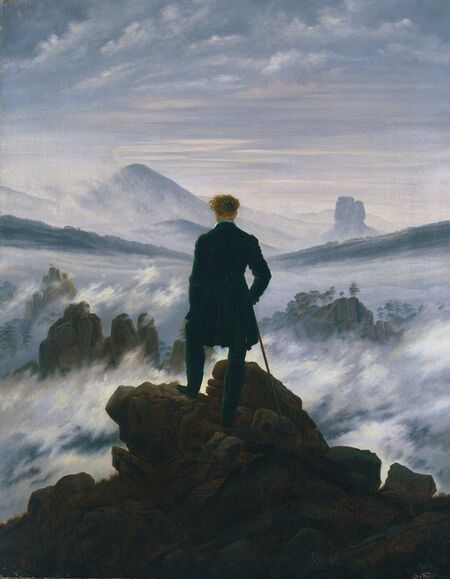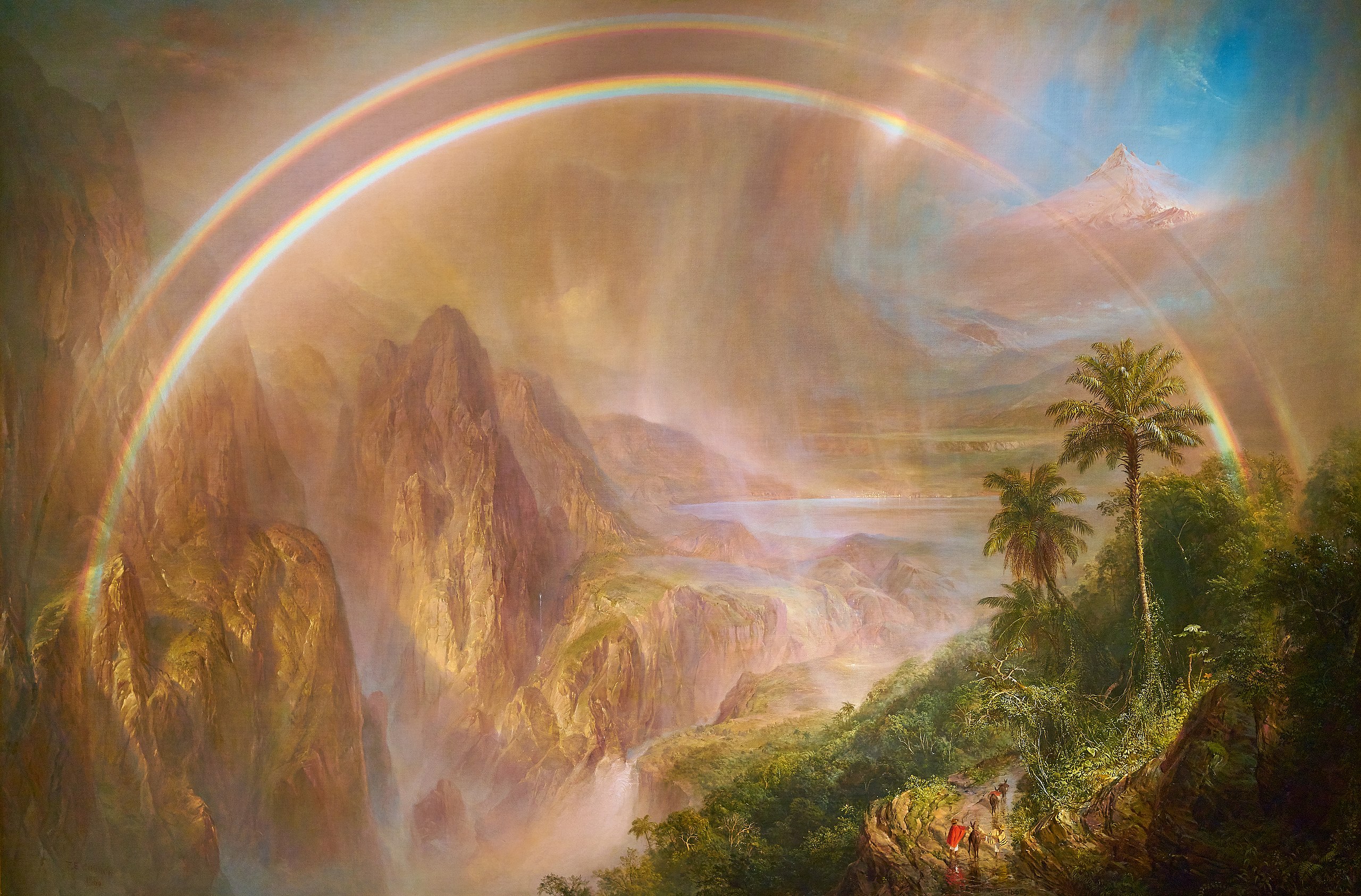Walk: Errands various
Distance: 2 miles
 |
| Caspar David Friedrich, Wanderer Above the Sea of Fog, 1830, oil on canvas |
In the midst of all the city moving particulars that occupy Ciwt's life these days, she misses - maybe romanticizes -the grandeur of nature. So her thoughts turn to one of the very first Romantic artists who did just that: turned to nature and away from the Enlightenment ideals of his time. Reason, order, logic weren't for him. Nature - wild, unbridled, vast. unknowable - was.
What Ciwt finds most intrguing about Friedrich's works is, well, the intrigue. Most painters in the German romantic landscape tradition concentrate exclusively on the overwhelming power and magnificence of Nature.
 |
| Gustav Grunewald (German), Niagra Falls, @1830 |
Even standing right in front of Gustav Grunewald's enormous diptycht of Niagra Falls at the de Young Museum the viewer needs to look hard to find the teeny man standing on the cliff at upper right or the two figures on the hill lower right. Same goes for the people trekking along the trail lower right in Frederic Edwin Church's even more enormous and dramatic rainbow painting down the hall. If one of that group wasn't dressed in red, the viewer might not notice them at all.
 |
| Frederic Edwin Church, Rainy Season in the Tropics, 1866 |
But not so with Friedrich's art. As spectacularly grand and mood-setting as his nature is, Friedrich has made man a partner with it. And the man is the painter himself. It there the intrigue for Ciwt begins: Why is he there? What is on his mind? Who is he with? What's going on with him?

No comments:
Post a Comment